Asbestos Detection: Tools and Techniques for Professionals
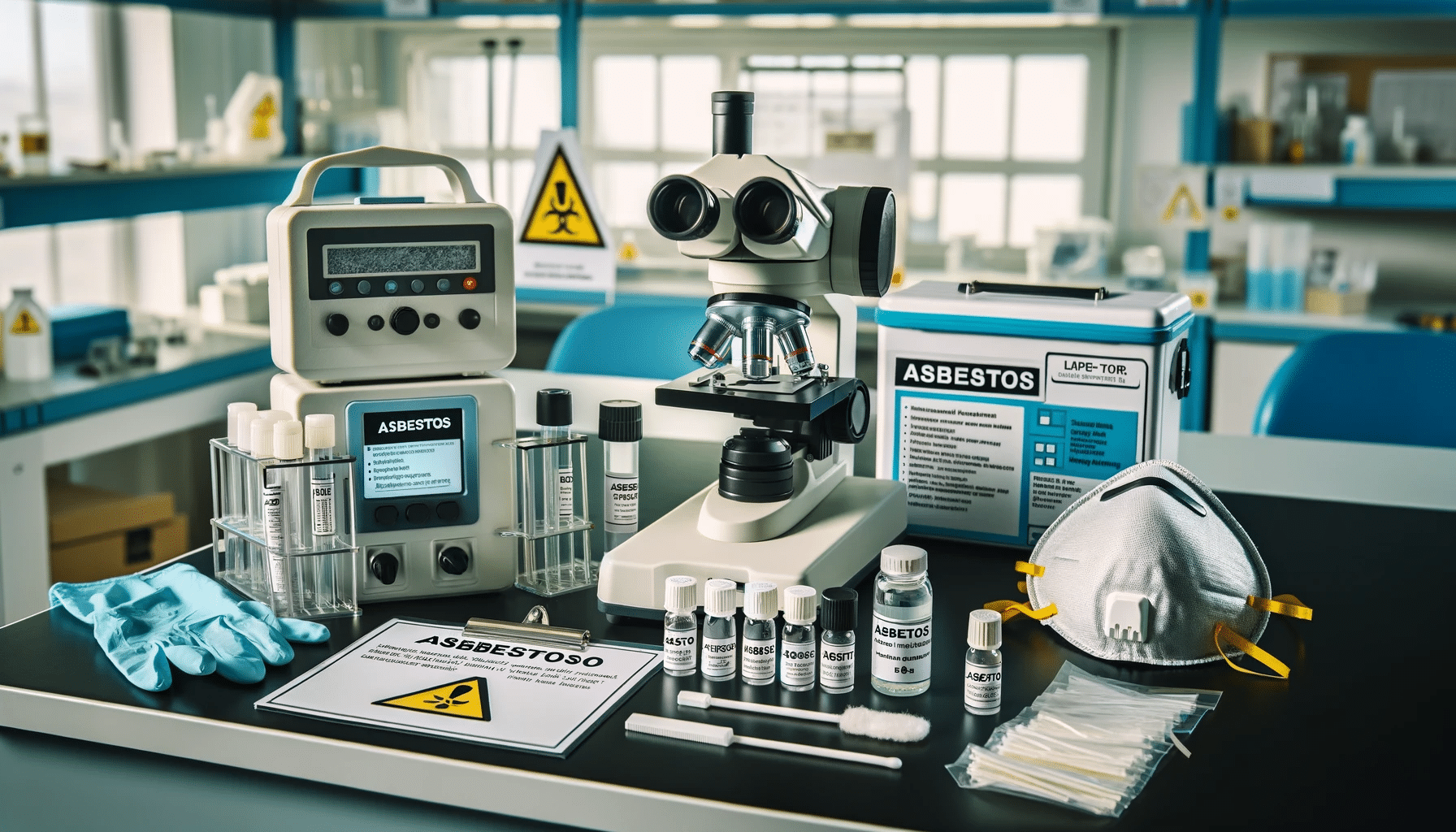
Is there asbestos in your facility? How much? These are two questions for which you need to have the answer. Employers are responsible for ensuring a safe and healthy workplace – and there can be significant financial consequences if they don’t.
Improved technology means you can use several different analytical methods to test for asbestos. Which technique you use depends on the material you need analyzed and the information you need.
If asbestos sampling confuses you, read on to learn more! Also, if you want training on asbestos awareness for your employees, we have a full course.
Why Asbestos Detection Is So Important
History
It’s hard to overstate how ubiquitous asbestos minerals were in the 19th and early 20th centuries. This unique material has a high tensile strength and provides fantastic insulation. That made it great for products as diverse as heat-resistant plastic materials and fireproof fabrics.
Asbestos minerals were also widely used in building materials like floor tiles, ceiling fixtures, and plaster. There simply wasn’t a technology better than this fibrous mineral.
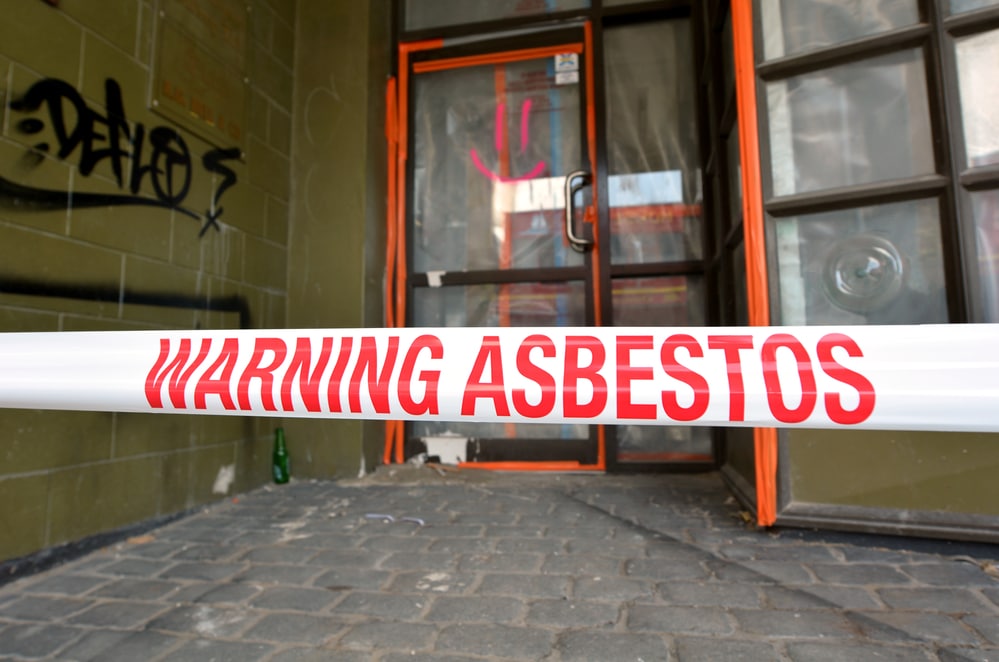
Health
Starting in the early 20th century, people began to notice that those who worked in the presence of asbestos seemed to develop certain respiratory problems.
Later, we learned that even a little exposure to loose asbestos fibers can be too much. The Occupational Safety and Health Administration (OSHA) currently says a very small safe level exists. Inhaling fibers can cause asbestosis, a gradual hardening of the lungs that causes intense coughing and difficulty breathing.
Mesothelioma, an aggressive and incurable cancer, can develop years after exposure to asbestos fibers.
The human cost is large enough, but employers have paid out billions of dollars in asbestos claims over the years. Plus, there’s the reputational damage from being seen as insensitive to workplace safety.
Your company should regularly assess the environment for asbestos fibers. Even beyond the regulatory requirements, it helps keep workers safe and healthy.
US Asbestos Regulations
Though no exposure to asbestos fibers is safe, OSHA mandates a permissible exposure limit (PEL). The PEL is 0.1 fiber per cubic centimeter (f/cc) of air over an eight-hour time-weighted average.
Employers need to enact engineering and administrative controls to reduce worker exposure above the PEL. They also need to provide adequate personal protective equipment (PPE).
In addition to the PEL, OSHA sets an excursion limit of 1.0 f/cc over a 30-minute period.
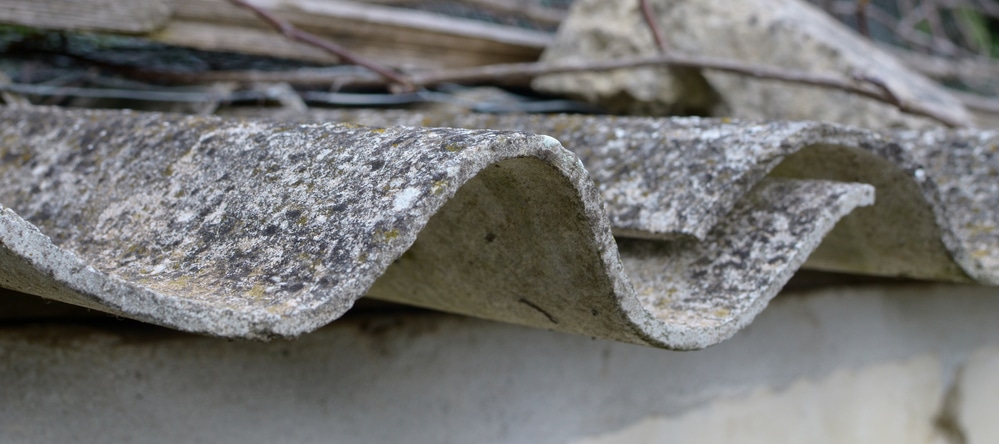
Presumed and Suspect ACM
A number of building materials produced prior to 1981 are considered to be presumed asbestos-containing material (PACM). These products include ceiling tiles, thermal insulation, floor tiles, and some cement.
Building materials from 1981 or after may still contain asbestos. These materials can be designated as suspect ACM. Teaching your employees to recognize asbestos-containing materials is important to their safety.
PACM and suspect ACM must be treated as if they contain confirmed asbestos. You can either continue to treat them as such indefinitely, or you can choose to test them to identify asbestos.
Building Materials
Under OSHA regulations, you are required to treat all PACM and suspect ACM as if asbestos had been detected. These abatement measures can be onerous – you may not be able to use a particular space in your building.
Laboratory detection can help you save time and money. It can also give workers peace of mind that their workplace is safe.
Friable and Non-friable Asbestos
Solid PACM or suspect ACM that crumbles when you touch it is referred to as friable. Materials that are solid and don’t give off much dust are called non-friable.
Friable material is far more dangerous because of the loose asbestos fibers it may give off. Non-friable asbestos doesn’t give off fibers, but it still may be dangerous if crushed or pulverized.
Non-friable material also needs to be tested to determine if and when it becomes friable.
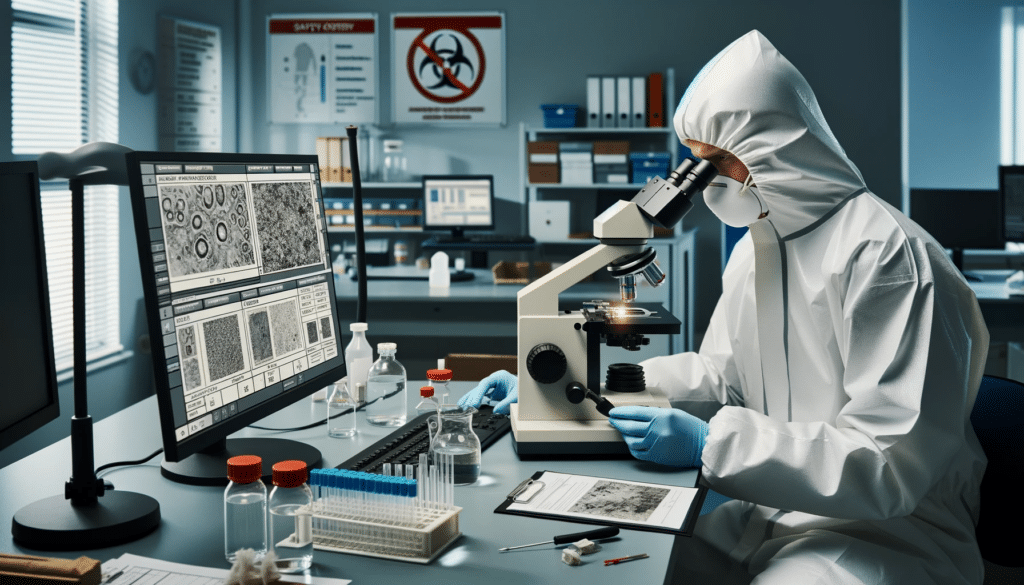
What Are The Methods of Testing for Asbestos?
Multiple samples should be taken from each PACM or suspect ACM. Only getting one sample could lead to an incorrect determination. But why?
Imagine a bowl of vegetable noodle soup. There are plenty of noodles in your bowl, but you might not get one in every spoonful. One sample spoonful doesn’t represent the whole bowl.
The same is true with PACM and suspect ACM. Multiple samples will ensure that you detect asbestos if it is present in the material.
Airborne Asbestos
Though asbestos fibers can be ingested in many ways, inhalation is the most common method. That means that your air needs to be tested, as well.
Sampling Procedures
A technician will draw some air through a 25mm filter using an electric pump. The filter helps to remove larger diameter non-asbestos fibers. As with building materials, multiple air samples are taken to test for airborne asbestos fibers.
These samples should be taken at a flow rate (how fast the air is drawn in through the filter) of 0.5 to 5 liters per minute. The sample size should be 25 to 2,400 liters.
Sampling should done in different parts of the building in order to get an accurate idea of employees’ occupational exposure.
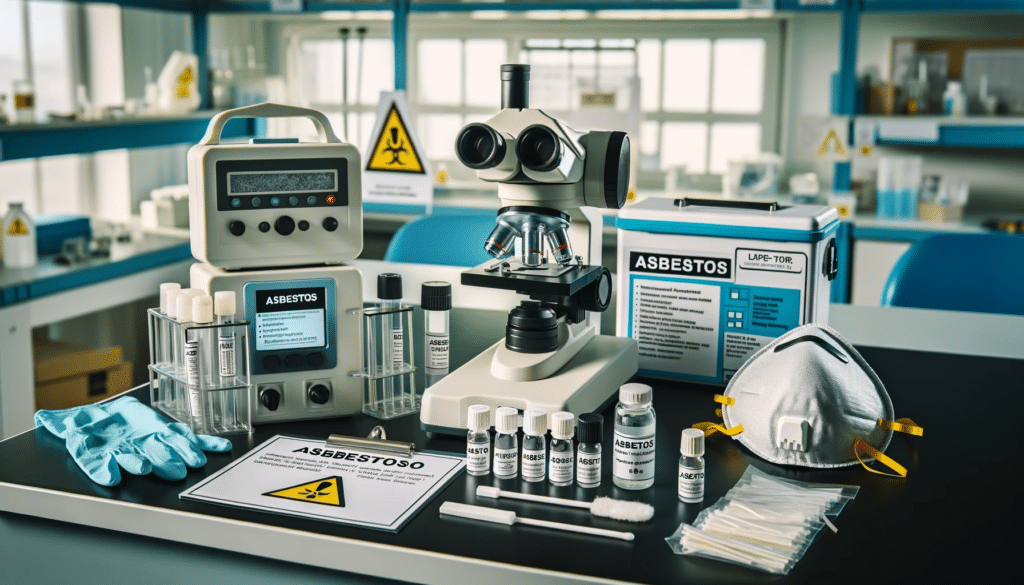
Water, Soil, and Dust Testing
On a macro scale, testing water, soil, or dust for asbestos is quite useful. The EPA uses soil tests to determine asbestos dumping, and water treatment systems also regularly check for asbestos.
This kind of testing typically isn’t as valuable on the business level, though many companies do find surface dust tests useful.
Be sure that any lab you use operates to recognized standards and uses peer-reviewed methods.
What Techniques Are Used to Assess Asbestos?
Once the sample preparation is complete, it’s time to put things under a microscope, literally. Several different types of microscopy can be used to test for asbestos – each has pros and cons. Some are better at the detection of fine fibers, for instance.
In general, the analytical techniques you opt for depend on what you want to know. Are you trying to assess overall risk, or do you want to confirm whether something is definitively asbestos?
There’s no straightforward answer to, “What is the instrument used to test for asbestos?” But at least one kind of microscope is behind each assessment.
What Do Asbestos Fibers look like?
Asbestos is a crystalline material made up of individual fibers that are noticeably longer than they are wide. These fibers are bundled together. Under a microscope, it looks almost like a collection of computer cables or a skein of yarn.
At the ends, the individual fibers split into smaller fibrils. These fibrils are tiny enough that they can bury deep within lung tissue if they’re inhaled. The tiny, narrow size of the fibrils is what makes them so dangerous.
You can identify asbestos in a number of different ways – its chemical makeup, the appearance of the fibers, or the crystal structure.
Phase Contrast Microscopy
A phase contrast microscope takes normal light and passes it through various lenses so that it becomes polarized light. That means that all light waves are vibrating in the same direction. This cuts out the visual “noise” and produces a clearer, higher contrast picture than you’d get with a normal microscope.
Asbestos fibers have a particular refractive index. This is a measure of how fast light can travel through a material. Each substance has its own unique refractive index that can be used to identify it.
Because you know the exact vibration of the light in a polarized light microscope, you can easily identify the refractive index of something.
Phase contrast microscopy is:
- Generally used on building materials, dust, soil, or rock
- Typically the quickest and least expensive form of asbestos testing
- Less able to tell asbestos and non-asbestos fibers apart
- Used for identifying the definite presence of asbestos in PACM/suspect ACM
- Not well-suited for counting fine fibers
Phase contrast methods are mostly used for solid samples. They are occasionally used for air analyses – certain labs are able to bring microscopes on-site to provide quick answers.
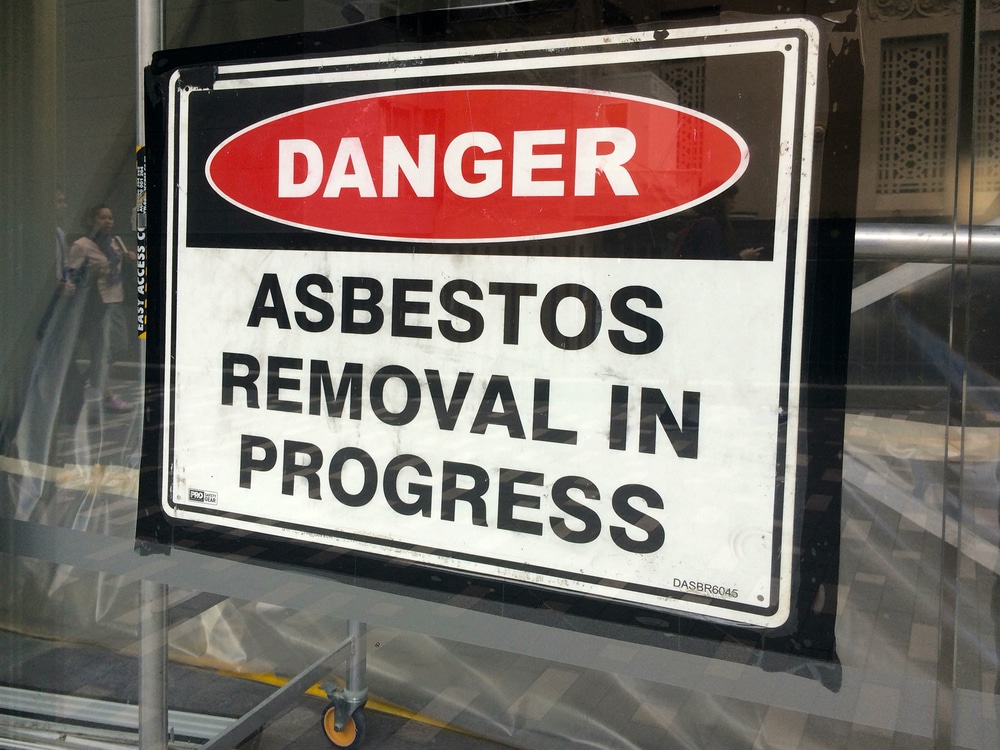
Scanning Electron Microscopy
Scanning electron microscopy fires a focused beam of electrons at something and measures the data that bounces back. This makes it a particularly good method for identifying extremely small things, including asbestos fibers that have a narrow diameter.
This technique can also reveal the texture of an item. Asbestos fibers have a very specific texture that differentiates them from other mineral fibers.
A detector on the microscope can help the electron beam reveal the “background noise” of other atomic particles. This can help scientists identify the chemical structure of what’s under the lens.
Electron microscopy can then detect extremely small particles and their chemical composition. This makes it great for identifying whether asbestos is or isn’t in a sample.
This type of testing is:
- Typically done on air or dust samples
- Generally used for identifying the absolute presence or absence of asbestos, for example, checking for contamination after abatement procedures.
- Able to detect asbestos fibers as separate from other fibers like gypsum or cellulose
- More expensive than analytical methods that use polarized light
Transmission Electron Microscopy
Transmission electron microscopy (TEM) is similar to its scanning electron cousin, but instead of bouncing electrons off of a sample, it sends electrons through a sample.
This allows TEM to detect fibers with a smaller diameter than even SEM can. Outside of asbestos testing, TEM is often used for looking at viruses and detecting particles on the nanoscale.
Sample preparation for TEM can be quite difficult. You have to take a cross-section of an object that’s so fine the detector can see electrons can pass through it. This makes TEM more expensive and time-consuming than other detection methods.
This also makes transmission electron microscopy the gold standard when it comes to air asbestos testing.
This type of test is:
- Typically done on air and dust samples
- Able to distinguish asbestos fibers from other naturally occurring fibrous minerals
- Capable of identifying different types of asbestos minerals (chrysotile, crocidolite, tremolite, etc.)
- Normally, the most expensive and time-consuming type of test utilized
How To Interpret the Results
Your test results form should list the following:
- The name of the site
- The name of the sample
- The technique performed
- The reporting limit (RL) of the test
The RL is how sensitive a particular method is. An RL of 0.5% for a building material means that the test is unreliable on samples that are less than 0.5% asbestos.
An RL of 0.05 f/cc for an air sample means that the test can tell you if a sample is under 0.05 fibers per cubic centimeter, but not by how much.
Samples are either undetectable, below the RL, or at a particular point above the RL. Different methods and laboratories will have different RLs.
Acting on Analyses
If a building material is found not to contain asbestos minerals, you can stop treating it as PACM or suspect ACM. It no longer needs to be inspected. However, you should keep the lab analyses on hand in order to show that fact – OSHA requires records to be kept for 30 years.
If building material has been identified as containing asbestos minerals, it is now definitively ACM. Follow the OSHA and EPA guidelines for ACM.
If an air sample is below the 0.1 f/cc PEL, the environment is considered reasonably safe. You are not required to introduce controls or provide employees with PPE.
If the asbestos detected in the air is found to be above the OSHA limit, you will need to administer engineering or administrative controls and/or provide PPE.
Choosing a Testing Company
There are two parts of the asbestos test process – collecting the site samples and getting the results analyzed.
The asbestos technicians who perform the site sample should be certified asbestos professionals. They should also adhere to OSHA as well as National Institute of Occupational Safety and Health (NIOSH) guidelines. This includes taking multiple samples as well as collecting air to certain specifications.
Non-profits like the American Industrial Hygiene Association vet asbestos professionals in each state and put out lists of approved providers. These can be a helpful resource.
The local asbestos company will typically have a laboratory they use for analysis. This lab should be part of the proficiency analytical testing program (PAT). PAT is a voluntary program that provides quality control for labs and makes sure they’re able to properly detect asbestos.
Other Asbestos Responsibilities
OSHA requires medical monitoring of employees exposed to a certain level of asbestos. They also require considerable employee training.
Employees exposed to asbestos also need to have separate lunch and decontamination areas that are below the PEL.
Employer responsibilities vary by industry – construction and shipbuilding, in particular, have special regulations.
Training Your Employees
Asbestos exposure is no laughing matter. Your employees must understand the dangers of exposure, the consequences for occupational health, and what high-quality testing looks like.
OSHA-compliant videos are perhaps the best way you can give your training the impact it needs. Consider incorporating OSHA-approved multimedia resources in your next presentation. Also, teaching your employees when and how to use asbestos detection tools is a benefit to both them, and you.